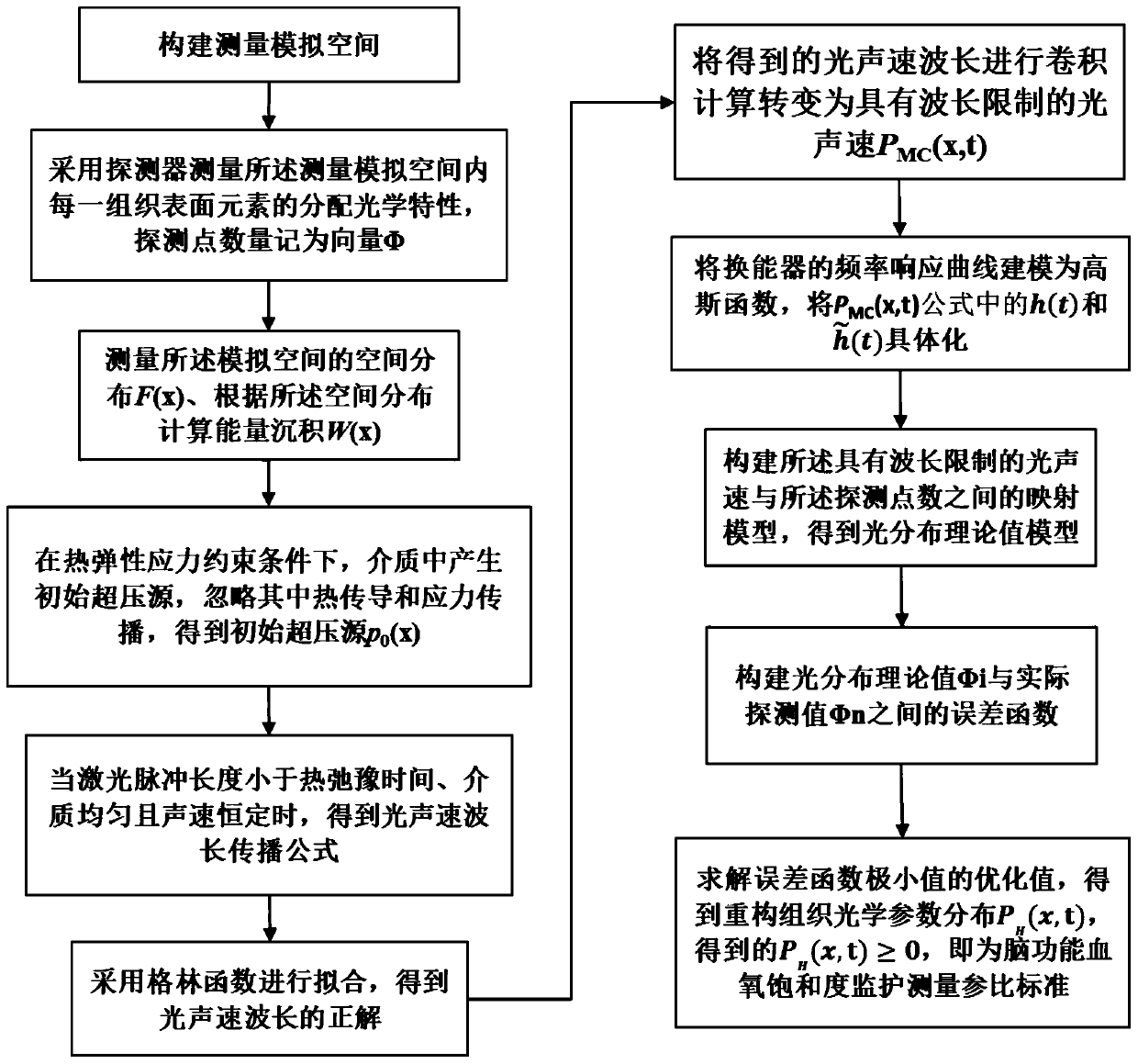Intelligent cerebral function oxyhemoglobin saturation monitoring measurement simulation algorithm
A brain function and saturation technology, applied in diagnostic recording/measurement, medical science, diagnostic signal processing, etc., can solve the problems of error-prone readings, low resolution, lossy detection, etc., to shield noise interference and avoid noise Error, effect of medium uniformity
- Summary
- Abstract
- Description
- Claims
- Application Information
AI Technical Summary
Problems solved by technology
Method used
Image
Examples
Embodiment 1
[0050] An intelligent cerebral function blood oxygen saturation monitoring and measurement simulation algorithm provided in this embodiment includes the following steps:
[0051]1) Construct a measurement simulation space. The simulation space is composed of multiple three-dimensional Cartesian coordinate system voxel grids, the number is 915×535×535, and the three-dimensional size of the grid is length×width×height=17mm×11mm×11mm;
[0052] 2) Use detectors to measure the distributed optical properties of each tissue surface element in the simulated space, and the number of detection points is recorded as the vector Φ=(Φ 1 ,Φ 2 ,Φ 3 ,...,Φ M ) T , assigning the optical property as the light absorption coefficient light scattering coefficient The light scattering anisotropy m, the volume of the element is 25μm×25μm×25μm; the measurement condition is to measure the photoacoustic velocity of the flowing blood with 21 wavelengths from 700nm to 900nm under the pulse flow rat...
Embodiment 2
[0081] The difference between this embodiment and Embodiment 1 is that the number of voxel grids in the three-dimensional Cartesian coordinate system is 800×500×500, and the three-dimensional size of the voxel grids: length×width×height=15mm×10mm×10mm; The volume is 20 μm×20 μm×20 μm.
[0082] The detector measurement condition in step 2) is to measure the photoacoustic velocity of the flowing blood with 21 wavelengths from 700nm to 900nm at a beat frequency of 60bpm and a step of 10nm under pulse flow.
Embodiment 3
[0084] The difference between this embodiment and Embodiment 1 and Embodiment 2 is that the number of voxel grids in the three-dimensional Cartesian coordinate system is 1000×550×550, and the three-dimensional size of the voxel grids: length×width×height=20mm×12mm× 12mm; the volume of the element is 30μm×30μm×30μm.
[0085] The detector measurement condition in step 2) is to measure the photoacoustic velocity of the flowing blood with 21 wavelengths from 700nm to 900nm at a beat frequency of 80bpm and a step of 15nm under pulse flow.
PUM
 Login to View More
Login to View More Abstract
Description
Claims
Application Information
 Login to View More
Login to View More - R&D
- Intellectual Property
- Life Sciences
- Materials
- Tech Scout
- Unparalleled Data Quality
- Higher Quality Content
- 60% Fewer Hallucinations
Browse by: Latest US Patents, China's latest patents, Technical Efficacy Thesaurus, Application Domain, Technology Topic, Popular Technical Reports.
© 2025 PatSnap. All rights reserved.Legal|Privacy policy|Modern Slavery Act Transparency Statement|Sitemap|About US| Contact US: help@patsnap.com



